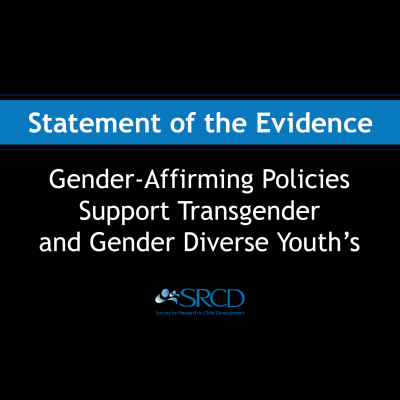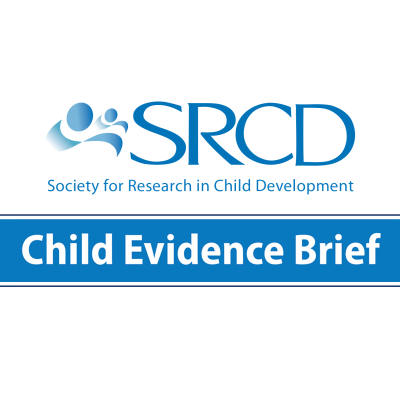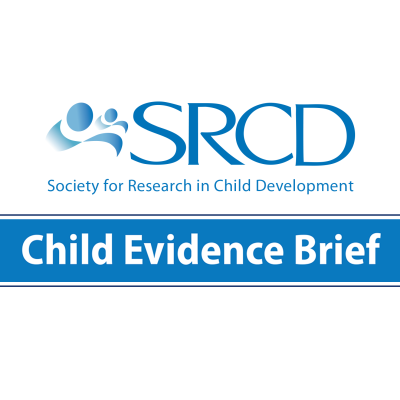The Epidemic of Childhood Obesity: Review of Research and Implications for Public Policy
Social Policy Report Brief, Volume 20, Issue 2
Why Does This Matter?
Obesity in American children is at epidemic levels: The childhood obesity statistics show that the percentage of young people who are overweight has more than tripled since 1980. Today, more than 9 million school-aged children are obese, putting them at increased risk of diabetes, high blood pressure, and asthma. Children who are obese are also more likely to be obese as adults, and to suffer throughout their lives with related diseases. Preventing these illnesses boosts productivity, reduces health care costs, and decreases rates of workplace absenteeism.
Policy Implications
Based on a thorough review of research, experts call on federal officials to:
- Expand USDA authority over foods served beyond the school cafeteria to include vending machines and after-school programs
- Continue government regulation of the quality of school foods
- Set recommended nutritional guidelines for all foods and drinks sold in schools
- Sponsor healthy media campaigns to promote good nutrition and exercise
Federal officials should also:
- Support research on how food marketing affects children’s diets and childhood obesity
- Ask the FTC to regulate ads for junk foods that are geared to children
- Examine federal health care programs to increase coverage of preventive services
State and local officials should:
- Support initiatives that encourage activity, such as roads that accommodate bikers and walkers
- Use existing community resources—such as recreation centers—to provide activities for children and offer nutrition and fitness classes
- Overcome obstacles to healthy eating and activity, such as taxing soft drinks and snack foods, then using the revenue to subsidize costs of fresh fruits and vegetables
All policymakers should recognize that intervention programs geared to helping children lose weight and maintain weight loss must go hand-in-hand with well-developed evaluations to ensure that they work.
Federal, state, and local governments have specific responsibilities in fighting childhood obesity. Programs must be coordinated among all levels of government as well as among health care providers, corporations, schools, and families
What the Research Says
Genetic factors play a role in the development of childhood obesity, but they aren’t the sole reason why so many children today are overweight. Due to changes in today’s culture and in our communities:
- Children are eating less healthy foods at school, purchased in the cafeteria and school store, from vending machines, and at school fundraisers
- The number and length of physical education classes in school have been cut, and when children are in P.E. classes, they are active for shorter spans of time
- Children are spending more time in after-school programs and child care, where many eat less healthy foods than they would eat at home, and may be less physically active
- Advertisers are promoting more high-calorie foods and drinks to children, and children are asking their parents to buy these items
- Families today eat more foods prepared outside the home and sit down to fewer meals at home together
- Children spend more time being driven in cars than walking and biking
Facts at a Glance
- Families who eat at home eat fewer calories than those who eat out; the number of families who eat out jumped 89 percent from 1972 to 1995
- Only 28 percent of children took P.E. classes in 2003, down from 42 percent in 1991
- Nearly 25 percent of trips from home are less than a mile away,but 75 percent of those trips are made by car
- The average child watches more than 40,000 TV commercials a year; about 80 percent of ads geared to kids are for fast food restaurants, cereals, candy, and toys
- Reducing TV watching has been found to help kids lose weight and avoid obesity
- Involving parents in intervention programs that manage overweight pre-teens’ weight has been found to boost chances of long-term weight loss
This brief summarizes a longer Social Policy Report, "The Epidemic of Childhood Obesity: Review of Research and Implications for Public Policy," by Jenelle S. Krishnamoorthy, Chantelle Hart, and Elissa Jelalian. At the time of this writing, Jenelle S. Krishnamoorthy was AAAS Fellow at the U.S. Department of State; Chantelle Hart was Postdoctoral Research Fellow at the Bradley/Hasbro Research Center at Brown Medical School in Providence, R.I.; and Elissa Jelalian was Associate Professor of Psychiatry and Human Behavior at Brown Medical School.


